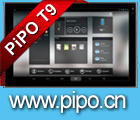MediaTek’s Tri-Cluster 10-core design features dual-core ARM Cortex-A73 at up to 2.5GHz, quad-core ARM Cortex-A53 at up to 2.2GHz and quad-core ARM Cortex A35 at up to 1.9GHz, with some really interesting features including low heat, high performance, 4K HDR, 4G LTE-Advanced WorldMode modem that uses 3x Carrier Aggregation with performance of 450MBit/s.
MediaTek Helio X30 increases performance by up to 35% and saves power by up to 50% over the MediaTek Helio X20.
CorePilot 4.0 with Centralized, Intelligent Task Scheduling, Thermal The 10nm fabrication by TSMC increases performance by up to 22% and saves power by up to 40% versus 16nm.
The 450MBit/s with 3x Carrier Aggregation downstream and 150Mbit/s with 2x Carrier Aggregation upstream for high volume content streaming and reliable connectivity. Category 10 4G LTE-Advanced WorldMode modem features new ETM 2.0 and TAS 2.0 technologies that saves battery power in everyday use by up to 35%, and up to 45% on multimedia specific scenarios.
X30 features Imagiq 2.0 with two 14-bit ISPs supporting 16+16MP dual camera functionality allows such as wide+zoom combination lenses allow real-time depth of field effects, fastest auto exposure, improved real-time denoise in low-light conditions. X30 Vision Processing Unit (VPU) paired to the Image Signal Processors (ISP) that provides a dedicated processing platform for numerous camera features, freeing up the CPU and GPU and saving power. Key advantages include:
– Programmability and Flexibility: The VPU provides a platform that allows brands the ability to customize camera functionality and drive product differentiation.
– Huge Power Reduction: The VPU is a dedicated camera-assisting hardware unit it has the ability to perform real-time processing functions, that were typically assigned to CPU or GPU, with only 1/10th power usage.
– Performance Boost: The VPU can still be used in isolation or as part of a team with the CPU/GPU, employing heterogeneous computing on same memory subsystem for advanced system or multi-application/function tasks.
The Helio X30 is the World’s first mobile SoC to bring a power efficient, hardware-based HDR cinema viewing experience to mobile devices. While other newly announced 4K HDR Smartphone SoCs might be doing the 4K rendering work in software, the X30 does it in hardware. 4K HDR10 standard offers a dynamic range of up to 10,000 nits. Paired with the latest, premium display technologies yields a never-seen-before quality and a true-to-life viewing experience.
Imagiq’s Dual Camera Zoom offers 2x optical zoom in a super slim form factor.
ClearZoom and Temporal Noise Reduction (TNR) technologies enable a sharp, crisp digital zoom up to 10x magnification.
Works for both video and photography.
MiraVision EnergySmart Screen is MediaTek’s advanced power saving technology for mobile displays, reducing power consumption (up to 10% of device’s total power or up to 25% of panel power, depending on brightness) while preserving viewing experience.
Instant AE
MediaTek Instant Auto Exposure (AE). The dedicated Camera Control Unit (CCU) hardware delivers considerably faster, automatic exposure adjustment when environmental lighting conditions change suddenly. AE convergence speed is up to twice as fast as competitive auto exposure performance.
Up to 8GB LPDDR4X
4×16-bit LPDDR4X 1866MHz memory is up to 50% more power efficient than previous generation LPDDR3, while also delivering up to 50% more performance.
Unique GPU Design: Deep MediaTek-Imagination Co-operation
The fully customized IMG PowerVR 7XTP-MP4 @ 800MHz is designed for lowest power usage while still delivering incredible performance. It saves up to 60% power versus while increasing performance by up to 2.4 times compared to the Helio X20.
Deep Learning
Access to MediaTek’s deep learning SDK featuring support for Caffe and Google’s TensorFlow frameworks, opening up the latest in machine intelligence to developers.



